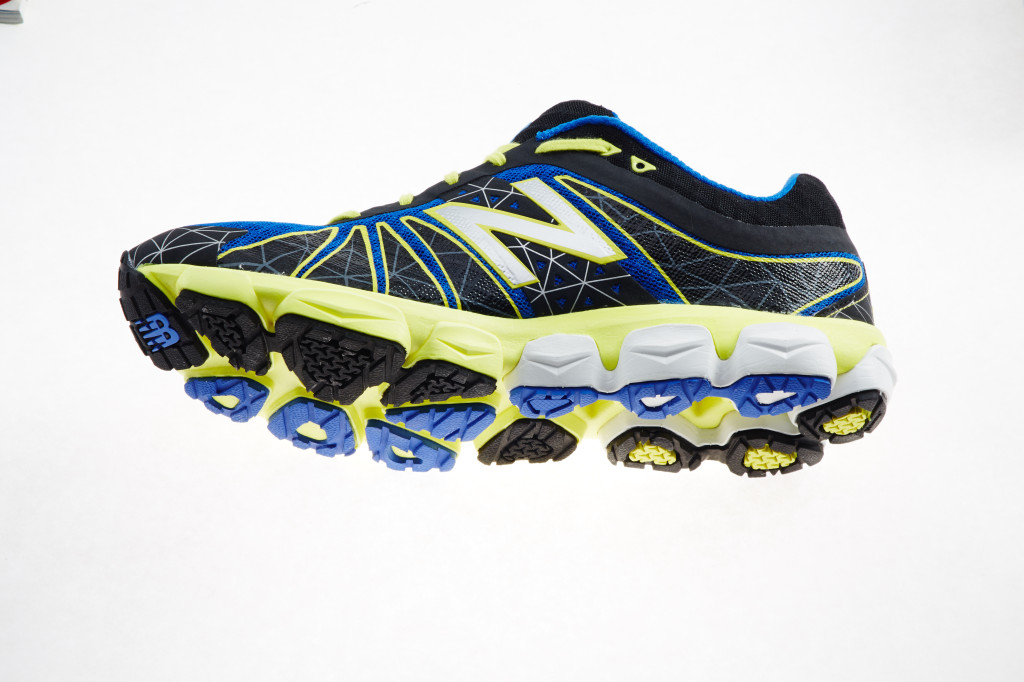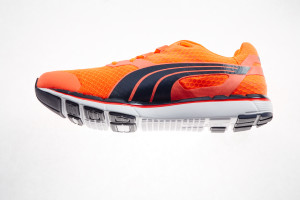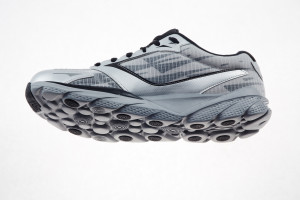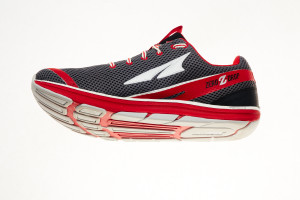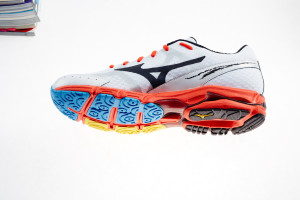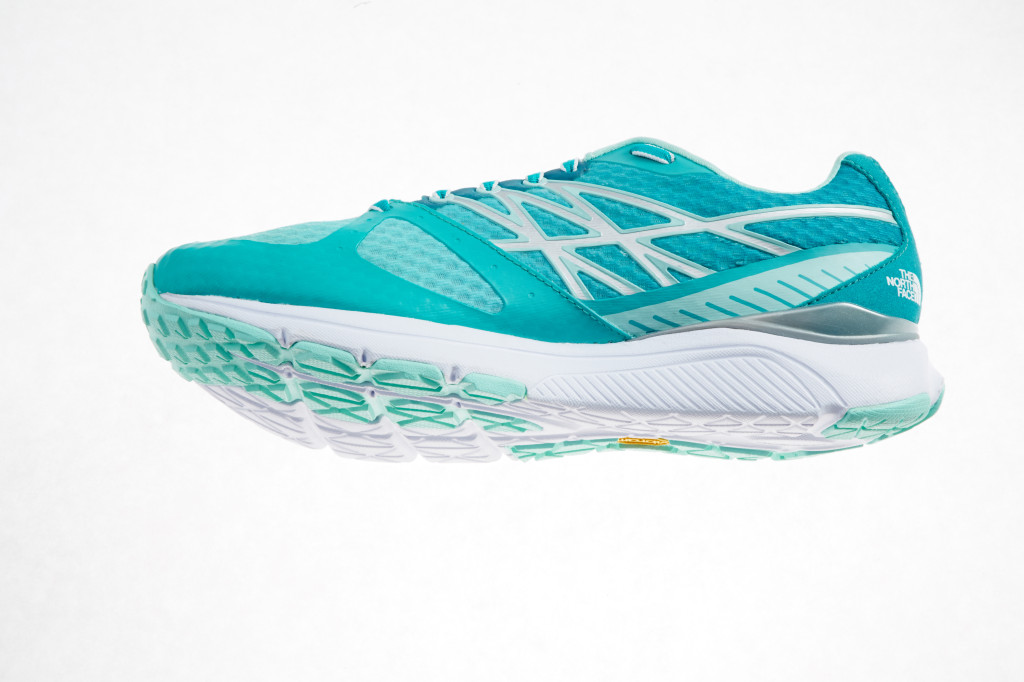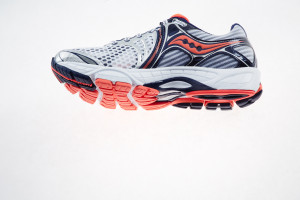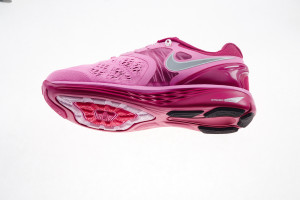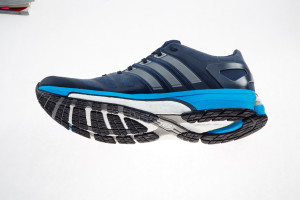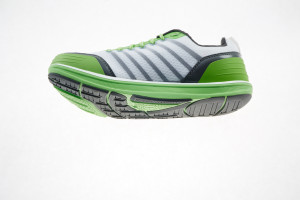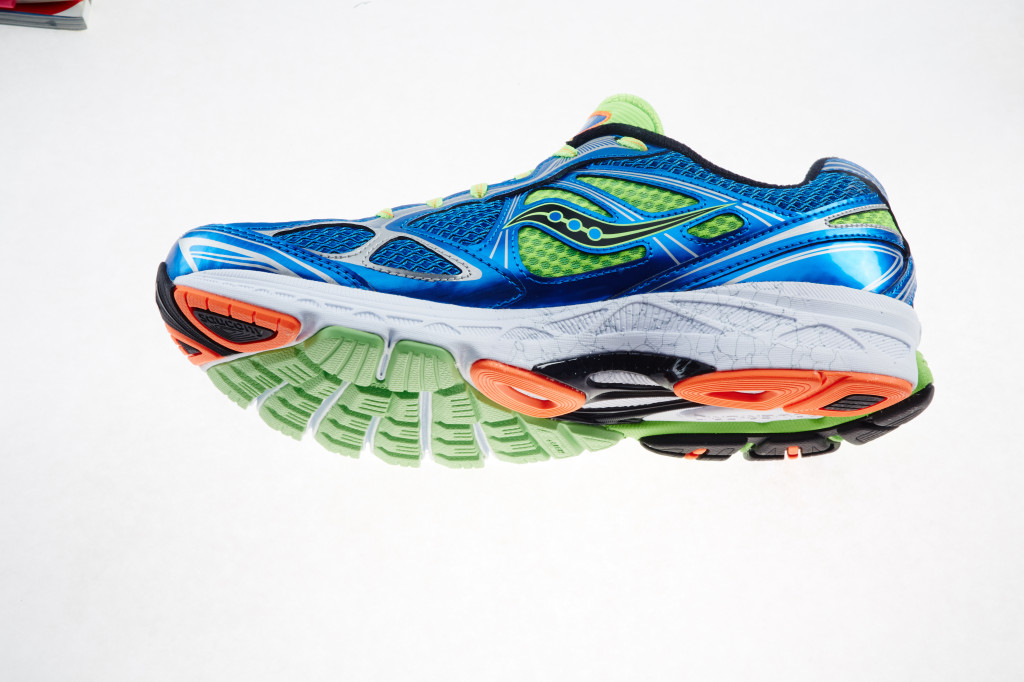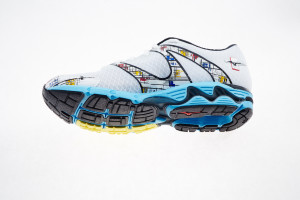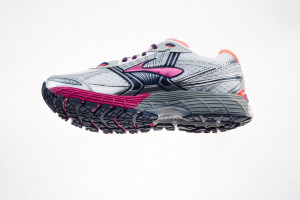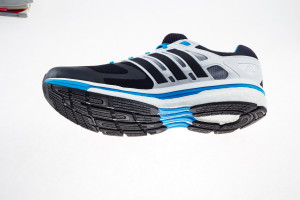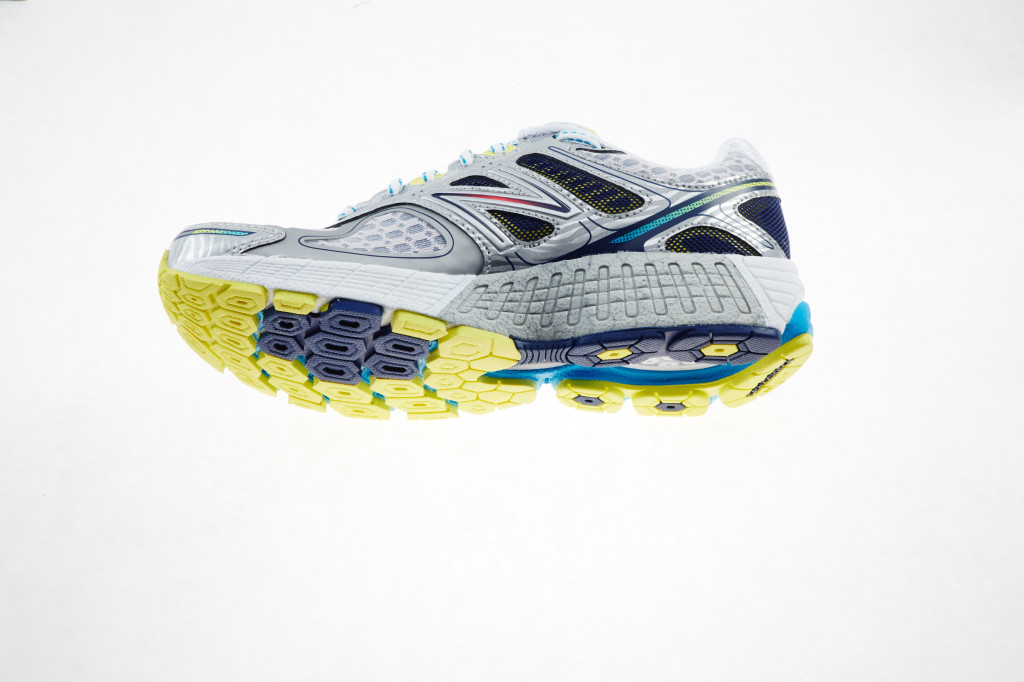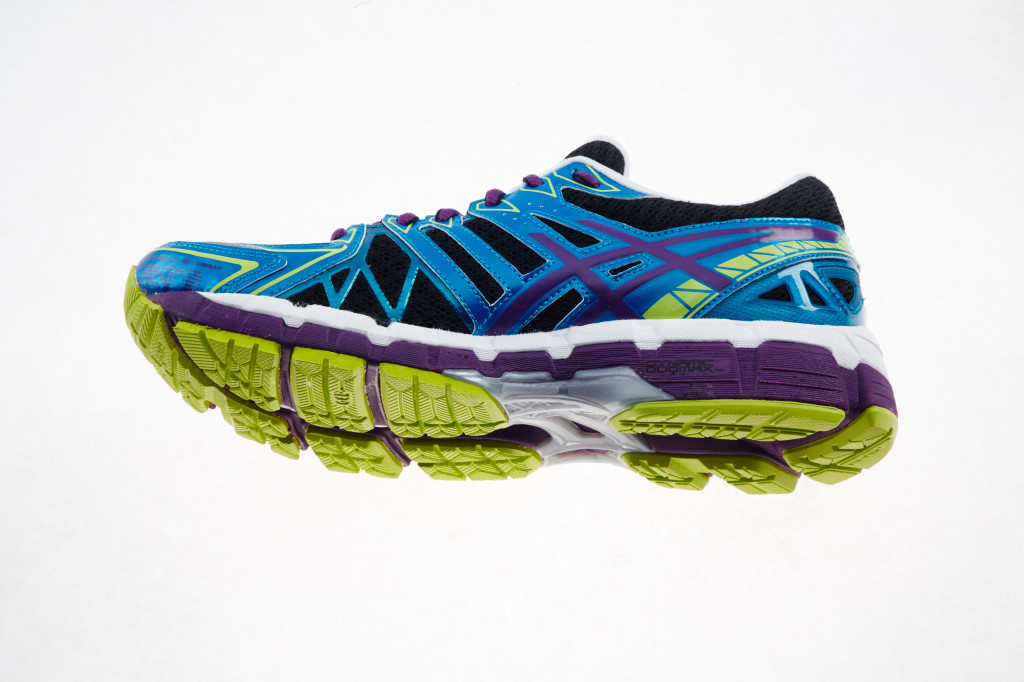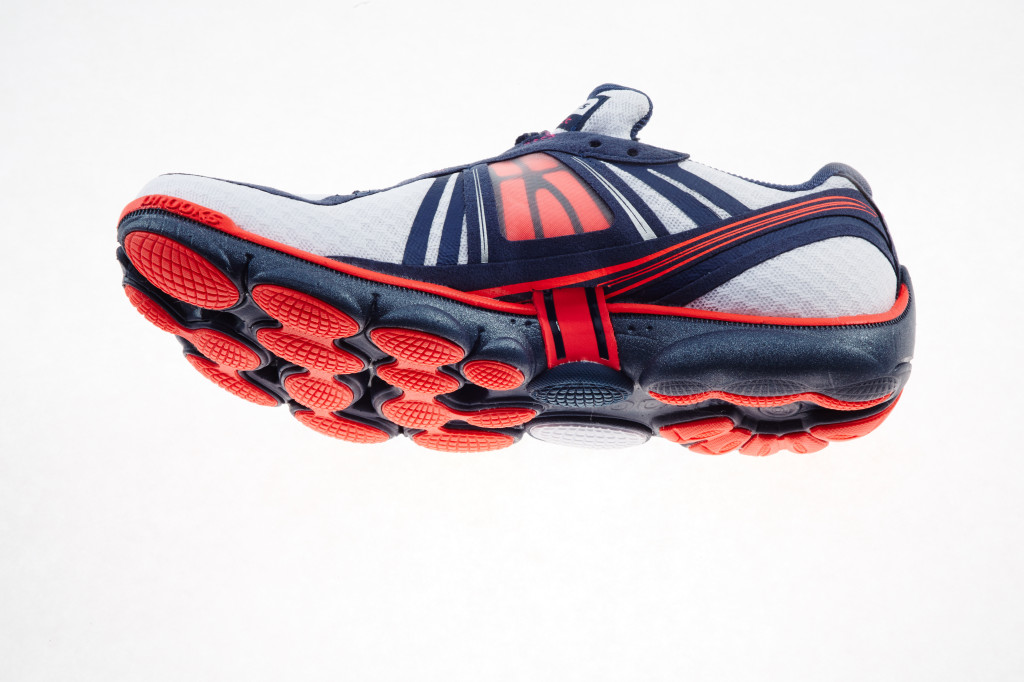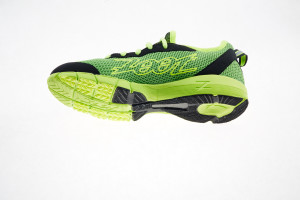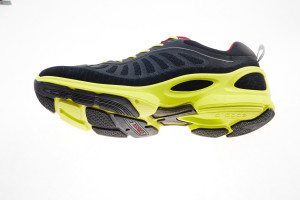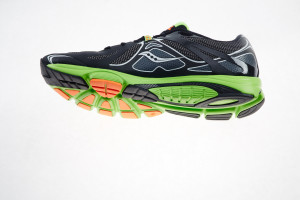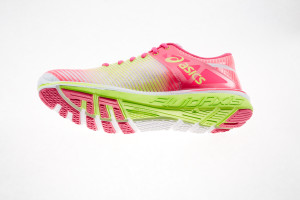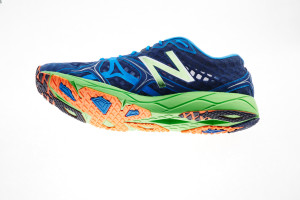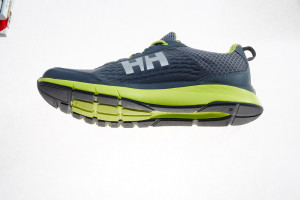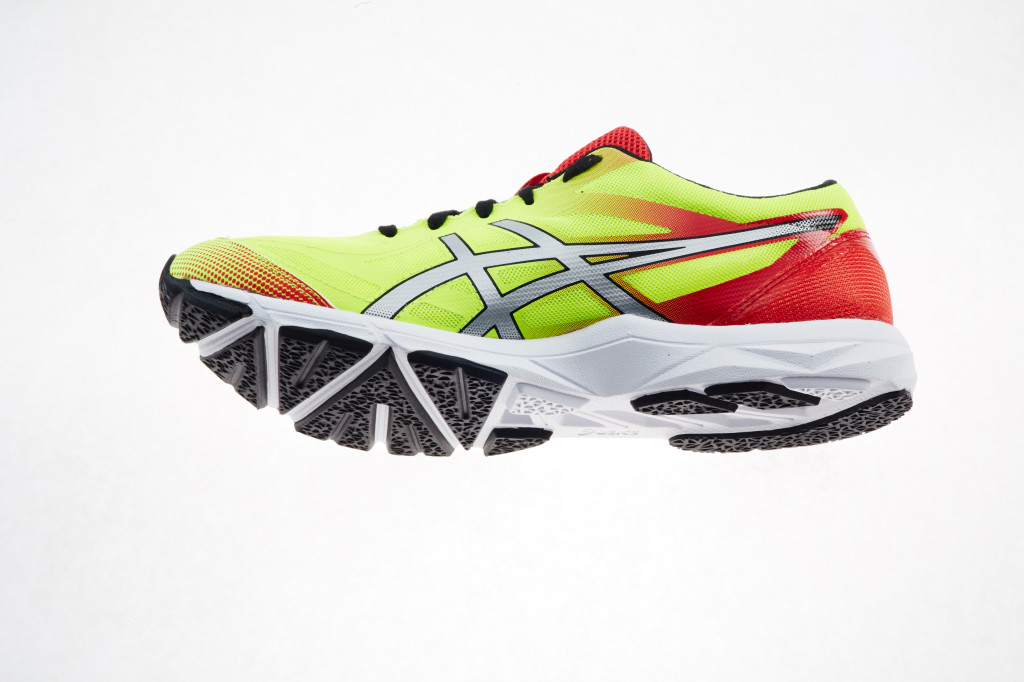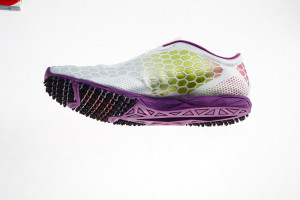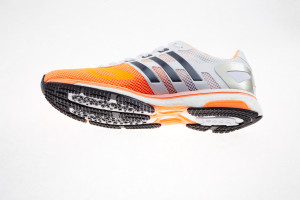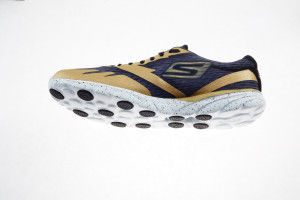2014 Spring Shoe Guide
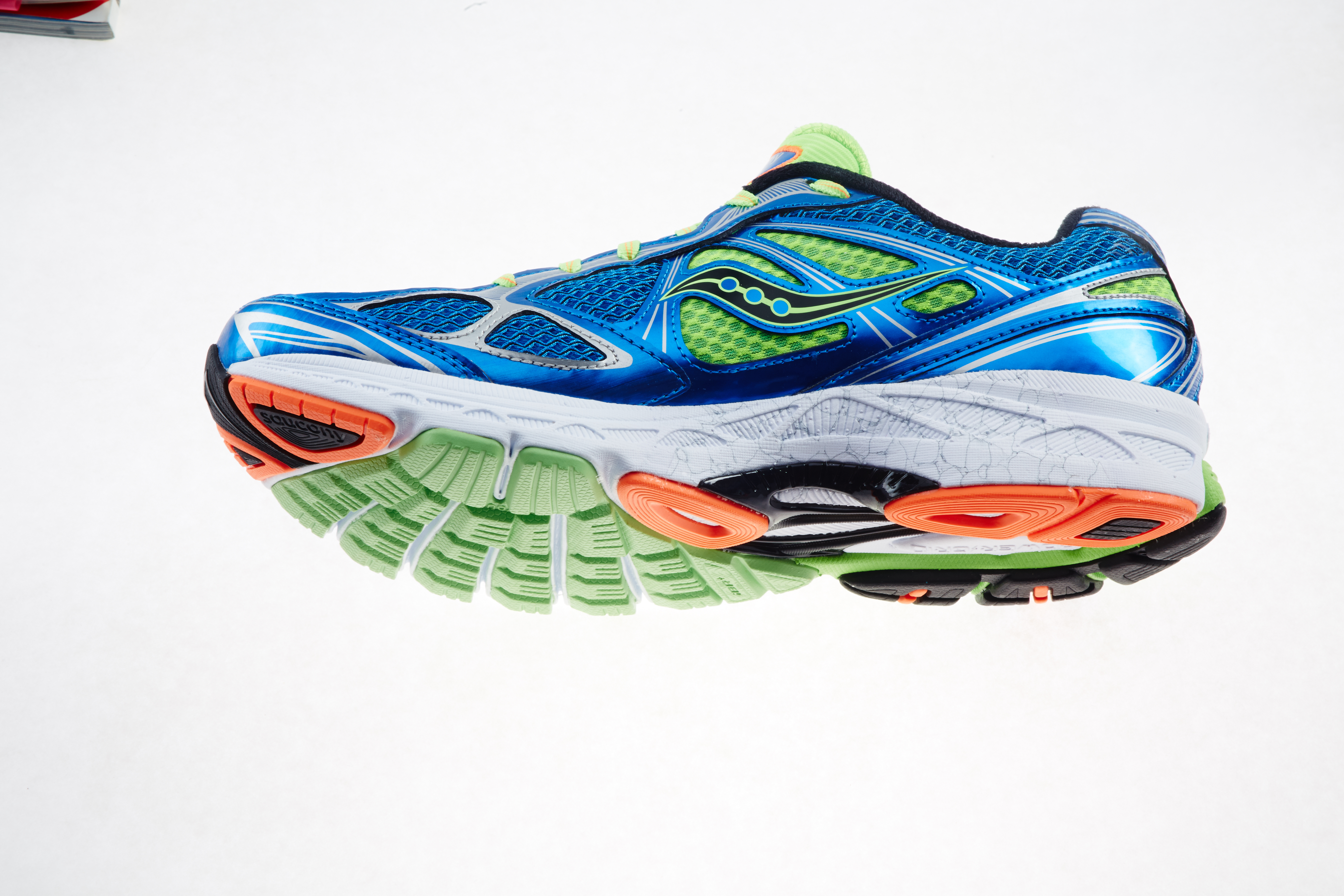
We put 27 models through exhaustive testing so that you can find your perfect fit this season.
HOW WE TEST
- Each shoe is tested by at least two different runners
- For a minimum of 50k
- During at least one hill or interval workout
- In dry, wet and snowy conditions
OUR GEAR EDITOR’S TIPS
- When buying a shoe, there will always be a trade off between weight and durability.
- Stack height (how high the shoe is off the ground in millimetres) and drop (the heel-to-toe difference in height) are a matter of personal preference and not all shoes are for every runner.
- It’s a good idea to own at least two different pairs of shoes. We recommend at least one pair for easy and long runs and another pair for intervals and tempo running.
- If you buy racing f lats, save them for racing or very short intervals, as they do not have the longevity of an everyday trainer.
- Hand clean your shoes and let them air dry.
[accordion]
[acc_item title=”Neutral Shoes”]
New Balance 890v4
EDITOR’S PICK: Best update, best neutral shoe
Men’s: 230 g (8.1 oz.), Women’s: 201 g (7.1 oz.) Heel: 19 mm, Forefoot: 11 mm, $140
Fans of the 890 will be impressed by this dramatic overhaul. Every change makes version four an even more reliable, lightweight shoe. New Balance has gone with a sole that’s built on a series of pods slimming it down to just 8.1 oz. The forefoot cushioning is vastly improved.
The upper now blends in the Phantom Fit seamless binding with mesh, making this an extremely comfortable ride that works well during training and racing. New Balance has managed to reinvent this reliable model without losing sight as to why it was so popular in the first place.
Tester Says » I’ve gone through multiple pairs of the 890s over the years and was worried when I heard that they did a redesign. I’m happy to report that the fit is better and these shoes feel really stable but are also very light.
Puma FAAS 500
Men’s: 287 g (9.8 oz.), Women’s: 197 g (8.1 oz.) Heel: 25 mm, Forefoot: 21 mm, $120
Now in its third version, the light and plush FAAS 500 gets an upper overhaul, which fits more snuggly. Puma stay with the same mid- and outsole construction, with a 4 mm drop, which will appeal most to midfoot strikers, and very soft and flexible ride.
Our testers reported that the shoe runs a size small, but feels very light and roomy when sized properly.
Tester Says » This is my second pair of FAAS 500s and I really like the new
fit. I personally enjoyed doing tempo runs in this shoe because they are
really light but don’t feel unprotective.
[/column]
Skechers Gorun Ride 3
Men’s: 241 g (8.5 oz.), Women’s: 181 g (6.5 oz.) Heel: 17.5 mm, Forefoot: 13.5 mm, $100
This Skechers GOrun support shoe will appeal to runners who want a sturdy midsole and the chance to customize the fit with the removable insole. Proprietary Resalyte cushioning is engineered for good feedback and foam memory. The seamless upper is supportive and conducive to sockless running. A roomy toe-box will provide a great fit for runners with wide forefeet.
Tester Says » I’ve been looking for a shoe to put in my weekly runs, with a really low drop between heel and toe because of my low arch and these are great!
[/column]
Altra Torin 1.5
Men’s: 270 g (9.5 oz.), Women’s: 243 g (8.6 oz.) Heel: 28 mm, Forefoot: 28 mm, $140
Fans of zero-drop shoes that need some support will appreciate the Torin 1.5. Altra’s unique design features a spacious toe box so that your toes can relax and splay. The pillowy midsole offers superb cushioning without obstructing a midfoot
to forefoot stride.
Tester Says » I have been reworking my stride to be more on my forefoot this season and I really liked the zero-drop of the Torin. They are really comfy, too.
[/column]
Mizuno Wave Rider 17
Men’s: 243 g (8.6 oz.), Women’s: 221 g (7.8 oz.) Heel: 31 mm, Forefoot: 18 mm, $155
One of Mizuno’s most dependable everyday trainers remains a great lightweight option. The U4ic midsole pairs nicely with the blown rubber outsole for a firm yet comfortable ride. The Wave Rider has ample room in the toe-box and a smooth seamless upper. The hefty drop will appeal to those that need a bit of help getting up on their forefoot.
Tester Says » The Wave Rider has a good amount of support under the midsole, but I still found these shoes great for doing fast repeats.
[/column]
The North Face Ultra Smooth
EDITOR’S PICK: Best new shoe
Men’s: 240 g (8.5 oz.), Women’s: 218 g (7.7 oz.) Heel: 18 mm, Forefoot: 10 mm, $110
Following the success of the Ultra Smooth Trail shoe, comes The North Face’s first road shoe. A midsole plate makes these also suitable for trail running, but it’s stiffer than many road shoes, although the Vibram sole is more flexible in the forefoot. The upper fits well, with a thin tongue and space in the forefoot. Our testers did indicate that the fit is about a size big. Light for a neutral trainer, this is for runners who split their workouts between the trail and the road.
Tester Says » I’m mostly a trail runner, so these felt very familiar, but were really fun on the roads. They felt right in both environments.
Saucony Triumph 17
EDITOR’S PICK: Best stability shoe
Men’s: 306 g (10.8 oz.), Women’s: 264 g (9.3 oz.) Heel: 26 mm, Forefoot: 18 mm, $175
The Triumph has been a consistent performer in the lightweight neutral category for over a decade. This update improves the overlay construction around the midfoot of the upper.
The Triumph 11 has a great heel-to-toe action if you’re a heel-striker, but isn’t too chunky for those landing on their mid- or forefoot. A handsome
everyday trainer designed for lots of abuse.
Tester Says » The Triumph feels like a lighter trainer but has the guts to survive many long runs. I’m happy that Saucony hasn’t changed much with this shoe, as there wasn’t much that needed changing.
[/column]
Nike Lunar Eclipse 4
Men’s: 292 g (10.3 oz.), Women’s: 235 g (8.3 oz.) Heel: 24 mm, Forefoot: 12 mm, $170
The Lunar Eclipse is updated with a new set of colours. The big change is underneath the shoe: the Lunarlon midsole has been tweaked, as well as the rubber outsole, which has been re-patterned and stripped down to the bare essentials to cut weight.
The upper gets a smart upgrade, with increased use of Nike’s knit technology around the toe and Hyperfuse mesh side panelling for maximal breathability. The Flywire layout is modified for a snugger fit. The TPU heel collar has also been reworked for
added stability.
Tester Says » This is one pretty looking shoe. It felt secure on my foot and I like the sole. It’s soft without being too squishy and has a supportive insole.
[/column]
Adidas Adistar Boost
Men’s: 315 g (11.1 oz.), Women’s: 265 g (69.3 oz.) Heel: 33 mm, Forefoot: 22 mm, $180
These everyday trainers are outfitted with Adidas’s Boost midsole technology, but also have stability features to satisfy a variety of runners. The stretchy Tech Fit upper is very comfortable and thankfully has a lot of give, as these shoes run narrow.
The lightweight Boost midsole provides a nice pop during easy and long runs. Adidas sticks with their Formation heel to correct mild pronation and the torsion system keeps the Adistar Boost from feeling too soft or too flexible.
Tester Says » I do most of my runs at around 5:30/km and I found that the Adistar Boost felt cushy and light. I’m a heel-striker and I found the heel transitioned well without being too thick.
[/column]
Altra Intuition
Women’s: 261 g (9.2 oz.) Heel: 25 mm, Forefoot: 25 mm, $135
The cleverly named Intuition is Altra’s women’s specific shoe. The company states that they have engineered this lightweight neutral trainer with women’s running biomechanics in mind. Our testers did enjoy the plush ride of the Intuition, particularly
those that appreciate a zero-drop shoe.
Tester Says » I’m new to Altra shoes and I liked how spacious the front of the shoe is for your foot to really stretch out. Once I got used to the feel, they were lots of fun to run in.
[/column]
[/acc_item]
[acc_item title=”Stability Shoes”]
Saucony Guide 7
EDITOR’S PICK: Best stability shoe
Men’s: 283 g (10 oz.), Women’s 243 g ( 8.6 oz.) Heel: 26 mm, Forefoot: 18 mm, $150
Three years in the making, the Guide 7 is the Goldilocks everyday trainer. Every feature of this updated stability shoe is “just right” for every runner. The Guide 7 gets Saucony’s new firm, light and responsive PowerGrid midsole from heel-to-toe.
The Guide 7 has a sturdy but breathable upper and is impressively light for a premium stability shoe. Saucony does have to make some compromises in order to satisfy so many different running styles, but the Guide 7 is remarkably light and versatile.
Tester Says » I’m hard on my shoes and have found myself running in a heavier, tougher shoe because of this. The Guide 7 is really light and can take a beating.
Mizuno Wave Inspire 10
Men’s: 225 g (9 oz.), Women’s: 212 g (7.5 oz.) Heel: 30 mm, Forefoot: 16 mm, $155
This is a very light option for a stability shoe. Of course, there is a trade off, as the Wave Inspire has more subtle pronation control construction. The firm yet absorbent midsole delivers a very comfortable ride, and the Wave Inspire corrects heel striking with ease. Our testers also gushed at how much they liked the design touches of the upper’s overlays.
Tester Says » I need some support but have had a tough time finding the right shoe. The Wave Inspire felt protective around the heel when I got tired at the end of my long run and looks very cool.
[/column]
Brooks Adrenaline GTS 14
Men’s: 320 g (11.3 oz.), Women’s: 266 g (9.4 oz.) Heel: 31 mm, Forefoot: 19 mm, $150
The Adrenaline GTS 14 proves that it’s never too late to teach an old dog new tricks. The significant difference between this and previous versions is Brooks’s decision to connect the forefoot and the heel. This allows mid- and heel-stikers a smoother transition onto the forefoot for toe-off.
The inner posting still provides a stable ride, but the Adrenaline excels at comfort and durability. It’s not a light shoe, but it’s resilient and a smooth ride.
Tester Says » I’m a big pronator and after a few runs in the Adrenaline GTS, I’ve got a lot of confidence in my stride. The upper along the arch is a little different than the previous version and I like how it fits.
[/column]
Adidas Supernova Glide Boost
Men’s: 295 g (10.4 oz.), Women’s: 250 g (8.8 oz.) Heel: 32 mm, Forefoot: 22 mm, $150
Adidas has gone all-in with their Boost technology. The legacy models such as the Supernova Glide are now outfitted with a lighter, more responsive midsole. Adidas continues its partnership with Continental, providing a tough, grippy rubber outsole.
The Supernova Glide has a stylish, breathable upper that is more traditional and rigid than the stretchiness of the Adistar Boost. This will be welcomed by fans of tried-and-true Adidas trainer.
Tester Says » This version feels less bulky and quicker than the non-Boost model from previous years. They’re comfortable and have been great for my long runs.
[/column]
New Balance 860v4
Men’s: 308 g (10.9 oz.), Women’s: 252 g (8.9 oz.) Heel: 24 mm, Forefoot: 12 mm, $150
The 860 is a solid choice for over-pronators. It has a sizable medial post and uses a plastic T Beam shank to keep the shoe from feeling sloppy. New Balance didn’t stray far from their successful design with this update, but they did manage to reduce the weight without compromising stability or cushioning. They’ve also included no-sew construction in the upper, which reduces weight and hot spots. The Absorb midsole and enhanced crash pad make the 860v4 a pillowy soft ride.
Tester Says » As a big over-pronator, the 860s are a good fit. They do have a significant stack height, but I’m excited to run in a stability shoe that’s almost as light as many neutral trainers.
[/column]
Asics Gel-Kayano 20
Men’s: 320 g (11.3 oz.), Women’s: 261 g (9.2 oz.) Heel: 36 mm, Forefoot: 27 mm, $200
Celebrating its 20th year, the new iteration of the much-adored Gel-Kayano maintains the coveted features of earlier versions including a premium level of support, but adds two essential enhancements. The new Fluidfit stretchable overlay forms to the foot for a customized fit. Asics’s new midsole compound Fluidride yields a bounce-back and cushioning that minimizes energy loss and impact throughout the stride.
Gradual pronation control is provided by the Dynamic Duomax support system for runners needing a mildly supportive shoe. This all-around trainer is sturdy yet light enough for marathon pace or tempo work for many runners.
Tester Says » I’ve been running in Kayanos for five years and I really like this update. I’ve got a wide foot and these shoes are roomy but don’t feel chunky.
[/column]
[/acc_item]
[acc_item title=”Minimal/Lightweight Shoes”]
Brooks Pure Connect
EDITOR’S PICK: Best minimal/lightweight
Men’s: 213 g (7.5 oz.), Women’s: 173 g (6.1 oz.) Heel: 20 mm, Forefoot: 16 mm, $130
Runners looking for a responsive minimal shoe with some cushioning will enjoy the newly redesigned PureConnect. Brooks expanded the toe box to allow for more toe splay. The
PureConnect has a secure fit thanks to the Nav Band, a piece of material that hugs the arch and holds it in place.
The PureConnect 3 sports a 4 mm drop and the pod-shaped cushioning encourage a mid- to forefoot strike without being too forceful. The upper is made mostly of mesh and has few
seams and no reported hotspots, even though this shoe fits snugger than most.
Tester Says » I run in very lightweight shoes and found the PureConnect very comfortable during my daily 15K run. You can really feel the shoe around your foot but it was a secure feeling.
Zoot Ultra Kiawe 2.0
Men’s: 198 g (7 oz.), Women’s: 182 g (6.4 oz.) Heel: 17 mm, Forefoot: 11 mm, $130
Triathletes have long realized the perks of sockless, quick-drying, easy to put on and take off shoes. The Kiawe 2.0 is a fairly neutral shoe but with reasonable midfoot support that is reinforced by a carbon-fibre insert. It slips on and off deftly without laces, but runners will appreciate the option of lacing them up. The drain holes in the bottom could come in handy on rainy days.
Tester Says » Supports my mid-foot and I like how nice they feel
without socks.
[/column]
Ecco Biom Evo Trainer
Men’s: 289 g (10.2 oz.), Women’s: 259 g (9.1 oz.) Heel: 26 mm, Forefoot: 19 mm, $175
The evolution of minimalism has led Ecco to several modifications of their original designs. Fit is augmented by a rubber heel and midfoot support on the outside of the shoe as well as a re-designed collar and tongue. The shank is attached on the outside of the sole, where it provides subtle midfoot support. The upper is flexible and sock-like yet supportive.
Tester Says » These shoes are quite firm and had me really up on my
forefoot, which felt great.
[/column]
Saucony Mirage 4
Men’s: 252 g (8.9 oz.), Women’s: 224 g (7.9 oz.) Heel: 22 mm, Forefoot: 18 mm, $140
For runners looking for a lighter-weight everyday trainer with some support, the Mirage has always been a popular choice. Version three saw Saucony overhauling the Mirage and making exciting changes. With version four comes the addition of Saucony’s PowerGrid technology in the heel, providing more shock absorption.
The Mirage 4 is one of the only shoes in this review that increased in weight, but that’s actually a good thing. At less than 9 oz., the Mirage 4 is still extremely light, but the increased weight comes from the improved upper, which gives the shoe a longer lifespan.
Tester Says » I run in the Kinvara and loved that the Mirage had that same soft, flexible ride, but the Mirage has more support, although it still feels light and fast.
[/column]
Asics Gel-Super J33
Men’s: 207 g (7.3 oz.), Women’s: 176 g (6.2 oz.) Heel: 20 mm, Forefoot: 14 mm, $130
The J33 looks like a racing flat but feels more supportive. The minimal, seamless upper is actually two pieces: a thin outer membrane that holds the shoe together and gives it a nice look, and the inner mesh that is both comfortable and breathable.
The “33” in the name alludes to the number of bones in the human foot, and the J33 is a part of Asics new Natural33 series, which all have the same drop, allowing runners to move back and forth between models during a training week. The Fluid Axis midsole and gel units provide good support and cushioning for such a lightweight shoe.
Tester Says » I normally run in the Nimbus and had no problems doing my tempo work in these shoes. The do have a very thin forefoot, but feel great while moving fast.
[/column]
New Balance 1400v4
Men’s: 181 g (6.4 oz.), Women’s: 156 g (5.5 oz.) Heel: 18 mm, Forefoot: 8 mm, $130
Last year, the 1400 was a huge hit for New Balance. This supremely lightweight racer also pulled double-duty as the go-to shoe for tempo work for many of our testers. This update thankfully didn’t stray too far from what made this model so desirable, but New Balance has found a way to improve the design.
The major difference can be found in the upper, where the seamless Fantom Fit has been reorganized in order to avoid hot spots around the outside forefoot area. New Balance lessened the weight, reducing needless rubber outsole bulk in the last few possible areas on the bottom of the shoe making subtle improvements on an already successful blueprint.
Tester Says » The 1400v2 are even faster feeling than the previous version. I’m a lighter forefoot striker, so the soft, light sole is just what I’m looking for both on the track and in races.
[/column]
Helly Hansen Panarena VTR
Men’s: 297 g (10.5 oz.), Women’s: 238 g (8.4 oz.) Heel: 21 mm, Forefoot: 9 mm, $120
The Panarena is a light neutral shoe designed for cross-training that is also suited to those who run as part of an all-around fitness plan, both on and off trail. The mesh upper is supported by special C Zone and C Zone Plus cushioning in the heel and forefoot for energy return. A strong heel counter and high collar offer extra support to the ankle that will aid stability and help make the shoe suitable for light trail running.
Tester Says » Good grip and support. A shoe that works for my cross-training days on the track and in the gym.
[/column]
[/acc_item]
[acc_item title=”Racing Flats”]
Asics Gel-Hyper Speed 6
EDITOR’S PICK: Best racing flat
Men’s: 160 g (5.7 oz.), Women’s: 130 g (4.6 oz.) Heel: 10 mm, Forefoot: 6 mm, $120
After a lengthy hiatus, Asics’s much-loved distance racing f lat is back and lighter than ever. This update is an ounce lighter after a structural reworking of the guts of the shoe. Gone are many of the upper overlays and the rubber underfoot, in favour of a shoe that will feel fast, but probably won’t be as durable. Female runners will be happy to hear that this version will also be gender specific.
Efficient, neutral runners that don’t like much of a heel-to-toe drop will love this shoe for 5k to marathon distance races. If you’re looking for slightly more support, try Asics’s Gel-DS Racer 10, which offers some stability and is more durable.
Tester Says » I am an Asics fan, but never thought to run in racing flats before. I took these to the track a few times and love how fast my feet felt, but they did start to show wear quite quickly. I’ll be saving them for races only.
New Balance RC 5000
Men’s: 90.5 g (3.2 oz.), Women’s: 79 g (2.8 oz.) Heel: 14 mm, Forefoot: 6 mm, $160
The RC5000 is one of the lightest road racing flats ever created. The Fantom Fit upper is truly sock-like, and the tiny, grippy outsole grabs the road or the track for fast leg turnover during a race.
The higher density REVlite RC midsole has a nice amount of pop to it, but these shoes are for limited use only. Our testers found them perfect for 400m to 10K on the road, but nothing more. They also wear out after 10–20 races. That said, the RC5000 is incredibly comfortable for such a serious performance design.
Tester Says » Apart from track spikes, I’ve never worn such a light and responsive shoe. It was perfect for a string of 5K races. When I put them on, I felt like I was ready to race.
[/column]
Adidas Adizero Adios Boost
Men’s: 220 g (7.7 oz.), Women’s: 185 mm (6.5 oz.) Heel: 27 mm, Forefoot: 17 mm, $160
The Adios have delivered multiple marathon world records over the years. It’s not surprising then that thousands of recreational runners have opted to lace up these neutral racing flats.
The Adios are now outfitted with Adidas’s Boost midsole technology, which is lighter and springier than EVA foam. The Adios are fast, but Adidas also takes into consideration the recreational runner’s need for slight pronation correction in the heel, as well as a subtle plastic shank in the arch that keeps the foot in a forward motion. The Adios with Boost technology is among our favourite shoes.
Tester Says » The Boost sole seems to have more zip to it for more kilometres than the old sole of the Adios. I raced a marathon in these shoes and they felt great from start to finish.
[/column]
Skechers Go Meb Speed 2
Unisex: 193 g (6.8 oz.) Heel: 18 mm, Forefoot: 14 mm, $130
Skechers have made a smart move by designing shoes with input from top American marathoner Meb Keflzighi. With this update, they continue their hallmark full mid-foot cushioning.
Gold details on the slick, close-fitting black upper belie the great value this shoe represents. The upper itself is snug and supportive, but not for runners who prefer a stiffer shoe. A good shoe for serious runners with neutral or mid-foot strike.
Tester Says » I was impressed with the support I got on speed workouts and racing and didn’t notice the midsole cushioning.
[/column]
[/acc_item]
[/accordion]
